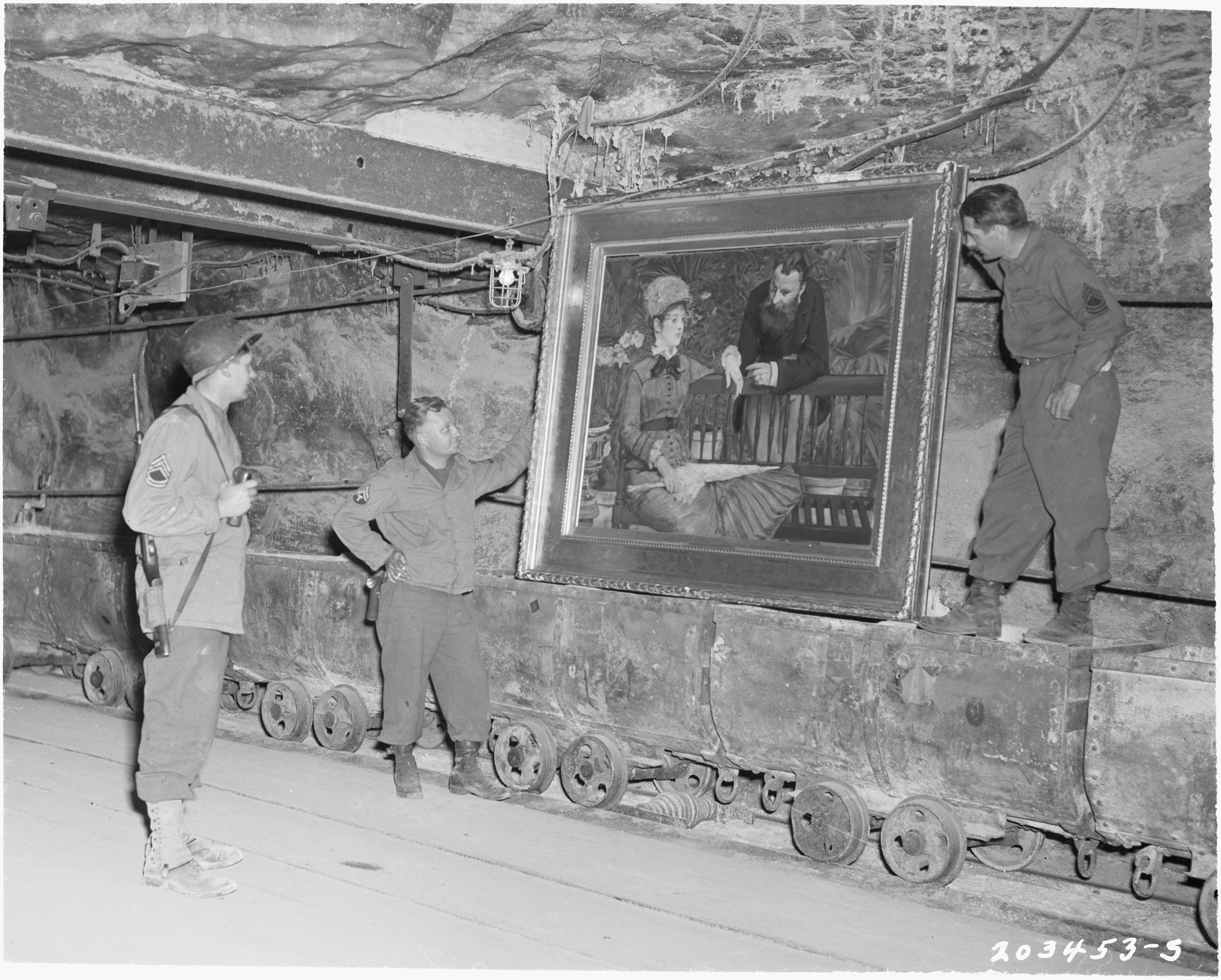
A painting by the French Impressionist Edouard Manet, titled “Wintergarden”, discovered in a vault in a salt mine in Merkers, Germany, April 1945. Photograph courtesy of the National Archives.
How to register:
We offer two field trip scheduling options:
- Select a field trip from the Museum’s public event schedule
- Request to schedule a field trip at a time that meets your group’s schedule
Audience: All audiences. Content appropriate for Grades 6-12.
Goal: Recognize the commitment, challenges, and sacrifices African American Women’s Army Corps members during World War II.
Program Description:
During World War II, a team of historians, museum professionals, scholars, architects, and archivists came together to protect European cultural sites from war damage. Known as the Monuments, Fine Arts, and Archives section, the team spread out throughout Europe and the Pacific to ensure that sites of cultural significance would be preserved and protected for future generations. This work earned them the nickname the Monuments Men.
As the war progressed, their mission evolved to locating, recovering, and reconstituting works of art that had been looted by Nazis. Through careful intelligence work, the Monuments Men uncovered thousands of stolen artwork across Germany and Austria hidden in salt mines, castles, and other hidden bunkers. Their service prevented the destruction of some of the world’s most famous artworks including Jan Van Eyck’s “Ghent Altarpiece,” Johannes Vermeer’s “The Astronomer,” and Michelangelo’s “Madonna and Child.”
In this History Talk, learn more about the commitment, accomplishments, and sacrifices of the Monuments Men. Understand how their determination and dedication to duty protected and secured European and Japanese cultural history and heritage during World War II.
Objective: At the end of this lesson students, will be able to
- List the accomplishments of the Monuments Men during World War II.
- Describe the Monument’s role in protecting and securing European and Japanese cultural history and heritage during World War II.
Guiding Questions:
How did the U.S. Army protect and preserve cultural heritage during World War II?
Curriculum Connections
Common Core Standards
- CCSS.ELA-LITERACY.RH.6-8.2
Determine the central ideas or information of a primary or secondary source; provide an accurate summary of the source distinct from prior knowledge or opinions.
History and Social Science Standards of Learning for Virginia Public Schools
- Virginia and United States History
- VUS.14 The student will apply social science skills to analyze the Untied States’ involvement in World War II by
Your message has been submitted.
